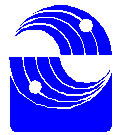
Project Phoenix observations at Parkes finished on June 6, 1995. The Targeted Search System was then used in a series of cooperative projects with Australian astronomers. These projects included alternative SETI experiments, observations of pulsars (using the wide band receiver system), and observations of a gravitational lens.
When the last observation was completed, we began packing up the system and support equipment for the trip home. Because of shipping schedules, we only had 36 hours. We removed each circuit board from the system, put it in an antistatic bag, and wrapped the bag in bubble wrap. The boards were then packed in foam-lined boxes. The RF Downconverter rack, IF equipment, X-terminals, control computers, test equipment, and support computers all had to be wrapped and packed. Thanks to help from the observatory staff, we finished with time to spare.
The TSS then began its journey back to California. The first stage, from Parkes to Sydney, was on a flatbed truck. The system was then enclosed in a large shipping container and hoisted aboard a cargo ship. Finally, in early August the TSS arrived at the Institute offices in Mountain View.
MRF at SETI Institute (33 kB image)Most of August '95 was taken up with "installing" the system. The system in the Mobile Research Facility (MRF - a 30 foot long facility container that houses the TSS) was set up in the parking lot. The power and communications lines were installed. Each subsystem was reassembled and tested.
The signal processing equipment is contained in special electronics racks in the MRF. Although space is a bit tight in the MRF, each rack is mounted on rails allowing the rack to slide forward thus providing access to the electronics from both front and rear.
MRF Interior View (16 kB image)In the picture below, a rack containing one of the CW signal detection computers has been opened to show the RFI shielding on the rack door. The black boxes at the bottom of the rack are part of the Redundant Array of Inexpensive Disks (RAID) that stores all 14 million channels from a single polarization, 10 MHz Multichannel Spectrum Analyzer. There are about 500 kg of disks in the rack giving 20 GB of storage.
CW Detector Rack in MRF (5 kB image)
Work continues on increasing our supply on spare circuit boards. These are needed to support a series of long deployments of the system to observatories over the next few years.
Engineer and MCSA Card Cage (22 kB image)
A new wide-band feed antenna is being built for the Woodbury antenna by Australia's Commonwealth Scientific and Industrial Research Organization (CSIRO) under contract to the SETI Institute. CSIRO built the wideband RF system for the Targeted Search System.